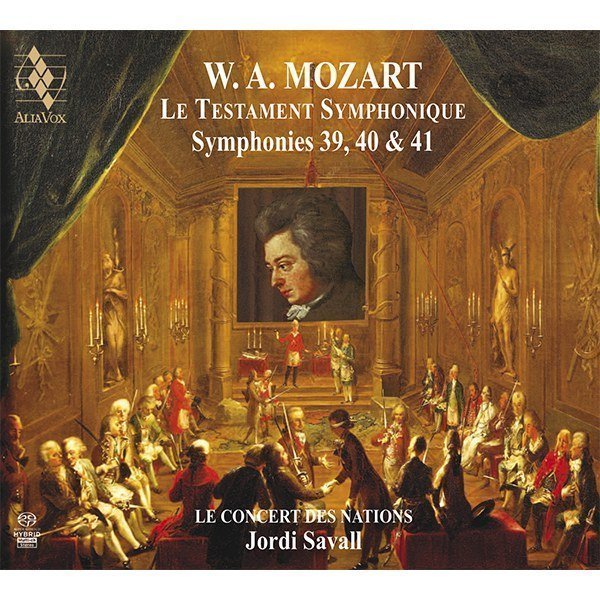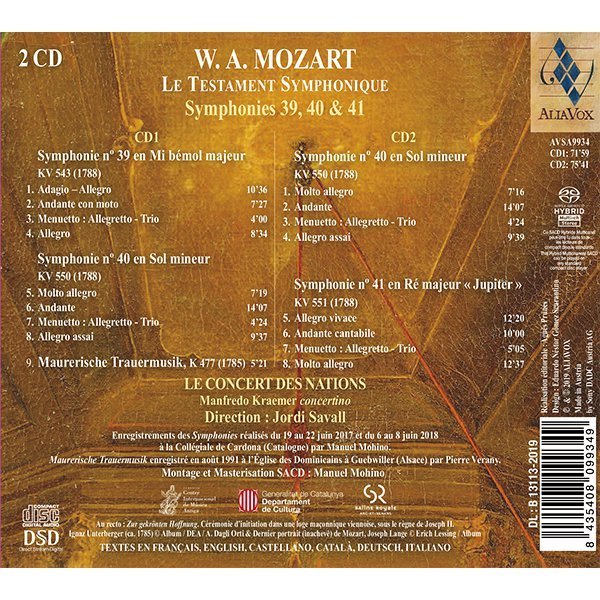W.A. MOZART
Le Testament Symphonique
Jordi Savall, Le Concert des Nations
21,99€
By the middle of 1788, at the age of 32, Mozart had reached the height of his creative maturity, dominated by the last three symphonies, absolute masterpieces that he composed in a very short period of time – barely one and a half months. This extraordinary “symphonic massif” consisting of three peaks – Symphony No. 39 in E-flat major, completed on 26th June, Symphony No 40 in G minor, completed on 25th July and Symphony No. 41 in C major, the “Jupiter”, dated 10th August – is unquestionably the composer’s “Symphonic Testament”.
Mozart’s Symphonic Testament
1787-1788
Years of creative maturity, years of distress
By the middle of 1788, at the age of 32, Mozart had reached the height of his creative maturity, dominated by the last three symphonies, absolute masterpieces that he composed in a very short period of time – barely one and a half months. This extraordinary “symphonic massif” consisting of three peaks – Symphony No. 39 in E-flat major, completed on 26th June, Symphony No 40 in G minor, completed on 25th July and Symphony No. 41 in C major, the “Jupiter”, dated 10th August – is unquestionably the composer’s “Symphonic Testament”. A titanic task that he carried out without any specific commission, and, moreover, in extremely precarious personal circumstances, as can be seen from the following letter, penned almost at the same time as the Symphony in G minor (K.550), which was finished on 25th July, which he sent to Michael Puchberg, a member of the Zur Wahrheit (“To Truth”) Masonic lodge, who at that time frequently responded positively to his desperate pleas for help by regularly lending him money:
+ information in the CD booklet
JORDI SAVALL
Melbourne, 28th March, 2019
Translated by Jacqueline Minett
Critics
”
”Dans un format intimiste proche de l’humain, l’orchestre les Nations de Savall déploie de solides arguments : équilibre des pupitres, clarté structurelle, surtout dans un scintillement millimétré des timbres très caractérisés, étonnante expressivité qui balance entre profondeur voire gravité et ivresse joyeuse… voire jubilation généreuse"
ClassiqueNews
”
”Een uitbundig album met drie theatrale en prachtige typische-Mozart-symfonieën."
Avrotos
”
"Savall leyó con profundidad y haciendo sobresalir una excelente flauta, y de nuevo los clarinetes. Algo del espíritu del Sturm und drang afloró con fuerza, una pátina que Savall exprimió con gran resultado."
Gramophone, Edward Breen
”
"The Concert des Nations is at its best and put flesh and bone on this vision, in which fluidity and theatricalness dominate."
Presto Classical








Share